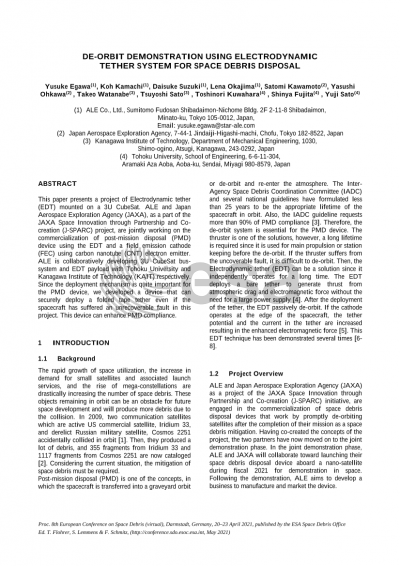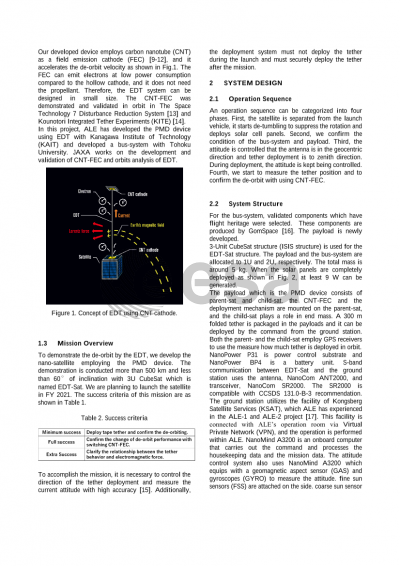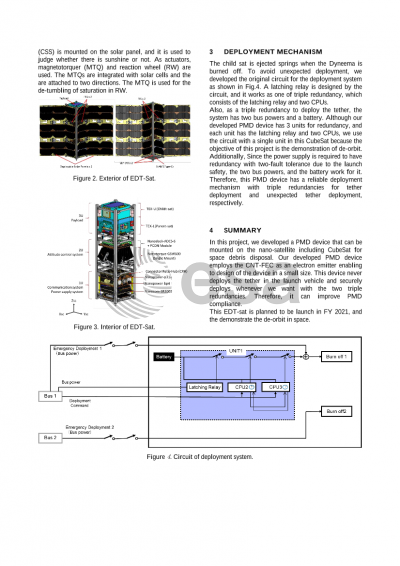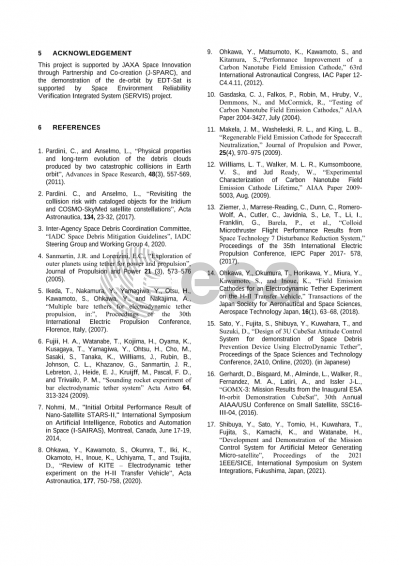Document details

Abstract
The rapid growth of space utilization, increase in demand for small satellites and associated launch services, and the rise of mega-constellations is creating a space debris issue. It is necessary to take measures that prevent space debris before launch and to de-orbit quickly after the end of mission. This is called post-mission disposal (PMD) and it is one of the most important techniques for de-orbiting satellites after end of mission. Practical application of PMD devices is required for mitigation of future space debris.
An electrodynamic tether (EDT) is a promising PMD concept. This system creates thrust from atmospheric drag and electromagnetic force without need for a large power supply. An EDT consists of a bare conductive tether and an electron emitter. In this PMD device, atmospheric drag and electromagnetic force are utilized to create a deorbiting force. When an electron emitter is attached, more electrons are released from the tether, and the tether becomes positively charged. As a result, more electrons are attracted to the tether's surface, increasing the current flowing through the tether. As a result of the interaction between the current flow and Earth's magnetic field, an electromagnetic force is produced. The EDT can be applied to many satellites in low Earth orbit (LEO), including CubeSats, and can be a key solution to prevent an increase of space debris.
ALE and Japan Aerospace Exploration Agency (JAXA), as a part of the JAXA Space Innovation through Partnership and Co-creation (J-SPARC) project, are jointly working on the commercialization of a PMD device using the EDT and a field emission cathode (FEC) using carbon nanotube (CNT) electron emitter. The CNT does not require propellant and it is easy to package in a small size, even for CubeSats. We are planning to launch a 3U CubeSat equipped with our developed PMD device in 2021 and demonstrate the de-orbit capability. In this project, we developed a PMD device, which can securely deploy the EDT even if the spacecraft has suffered an unrecoverable fault. This means that our developed PMD device can enhance the rate of PMD compliance in the future. We calculated the effect of the device on the EDT performance and our analysis shows that our developed PMD device can reduce the time of required to reenter the atmosphere.
At this conference, we will introduce our EDT mission overview and provide the details of the developed PMD device including the method of tether storage, the deployment system, the electron emitter, and show the calculated effect of our EDT on the orbital decay rate.
Preview





